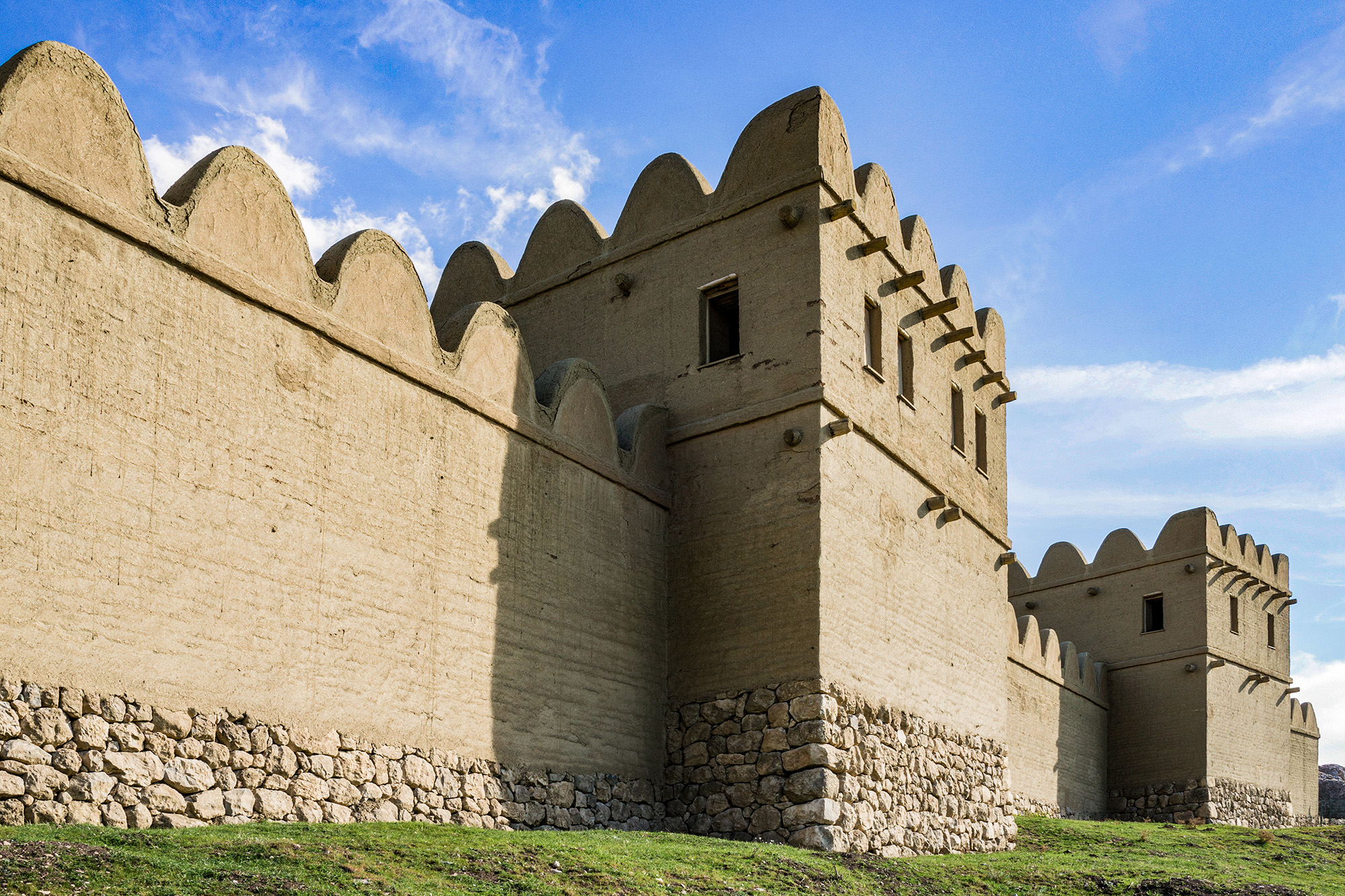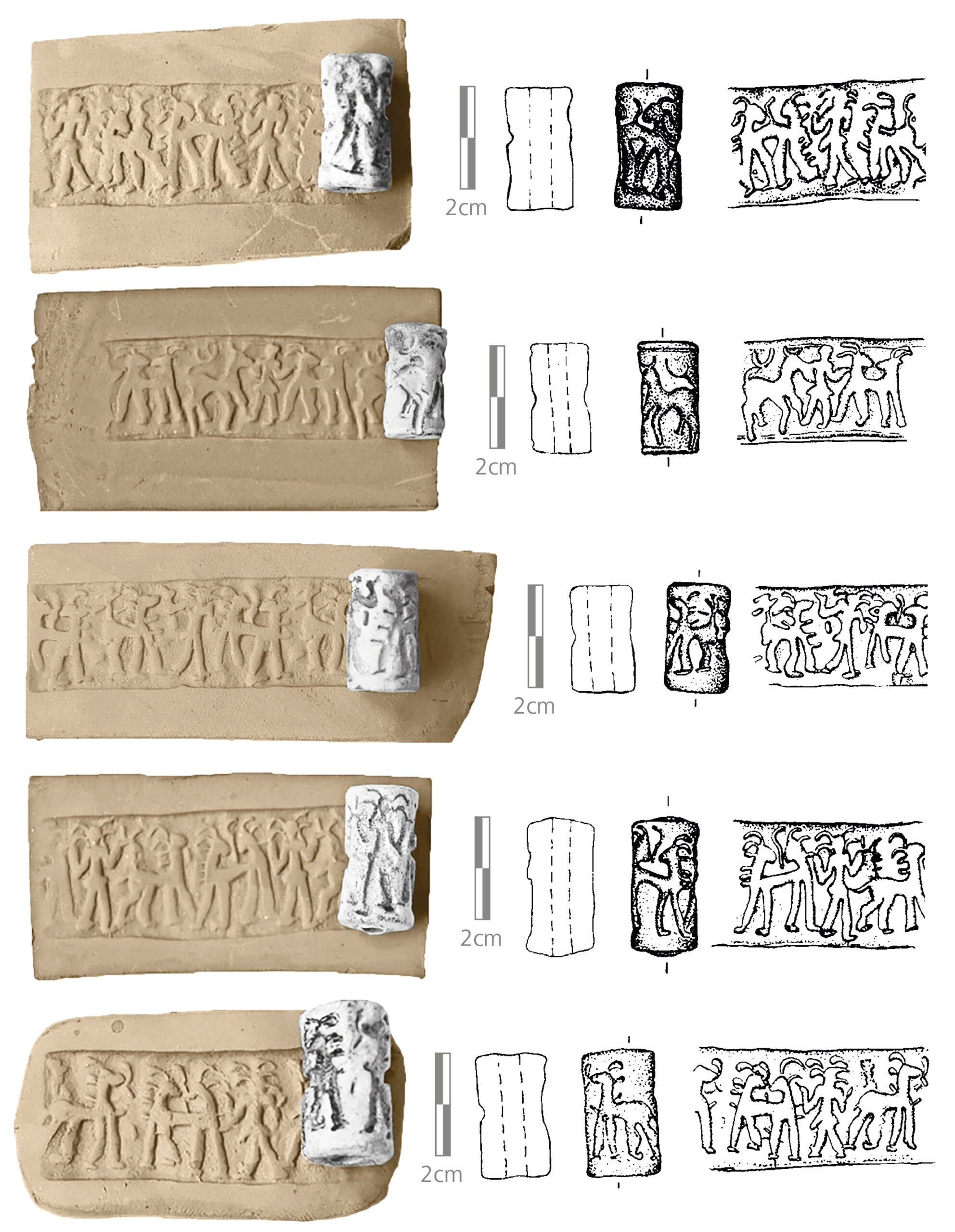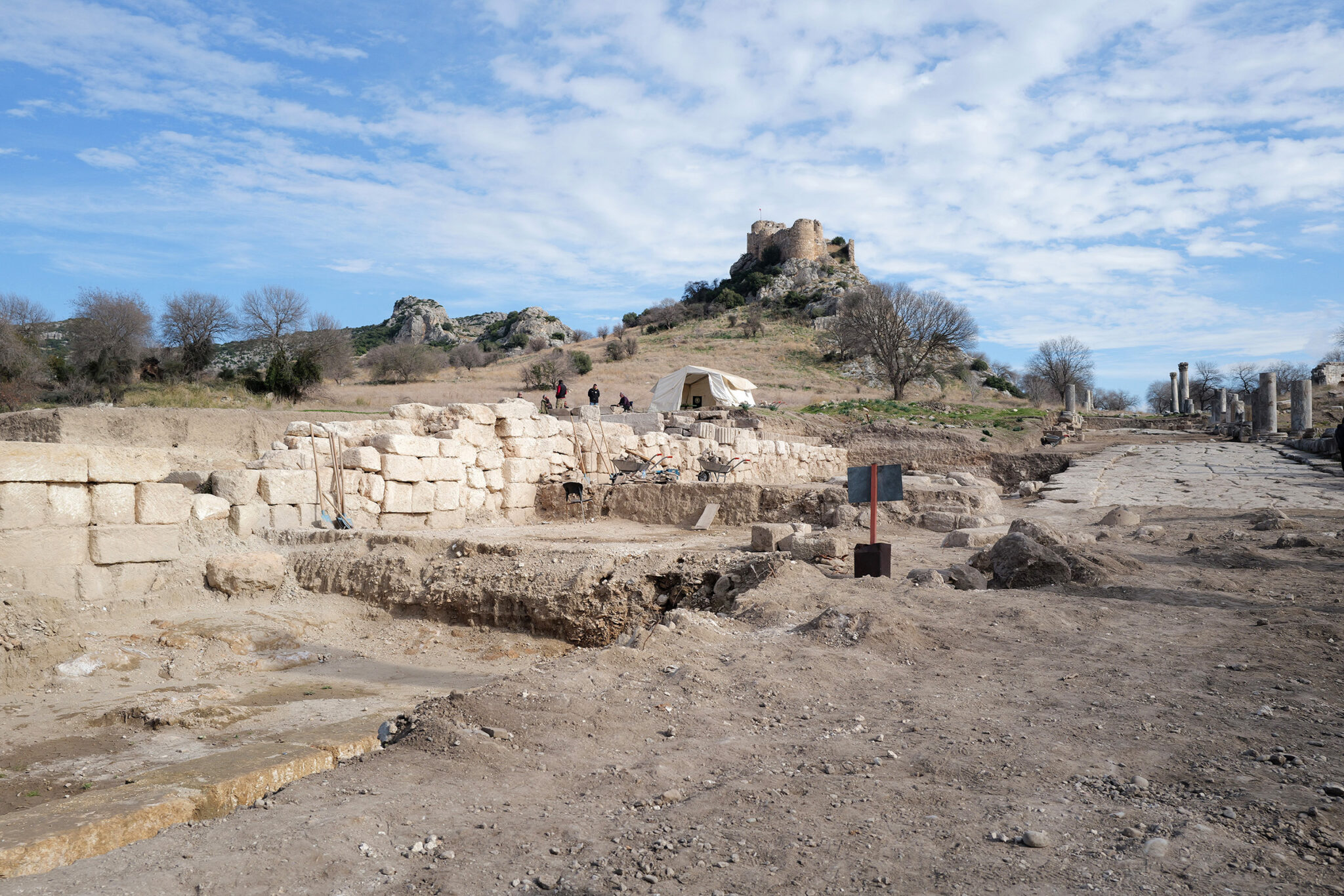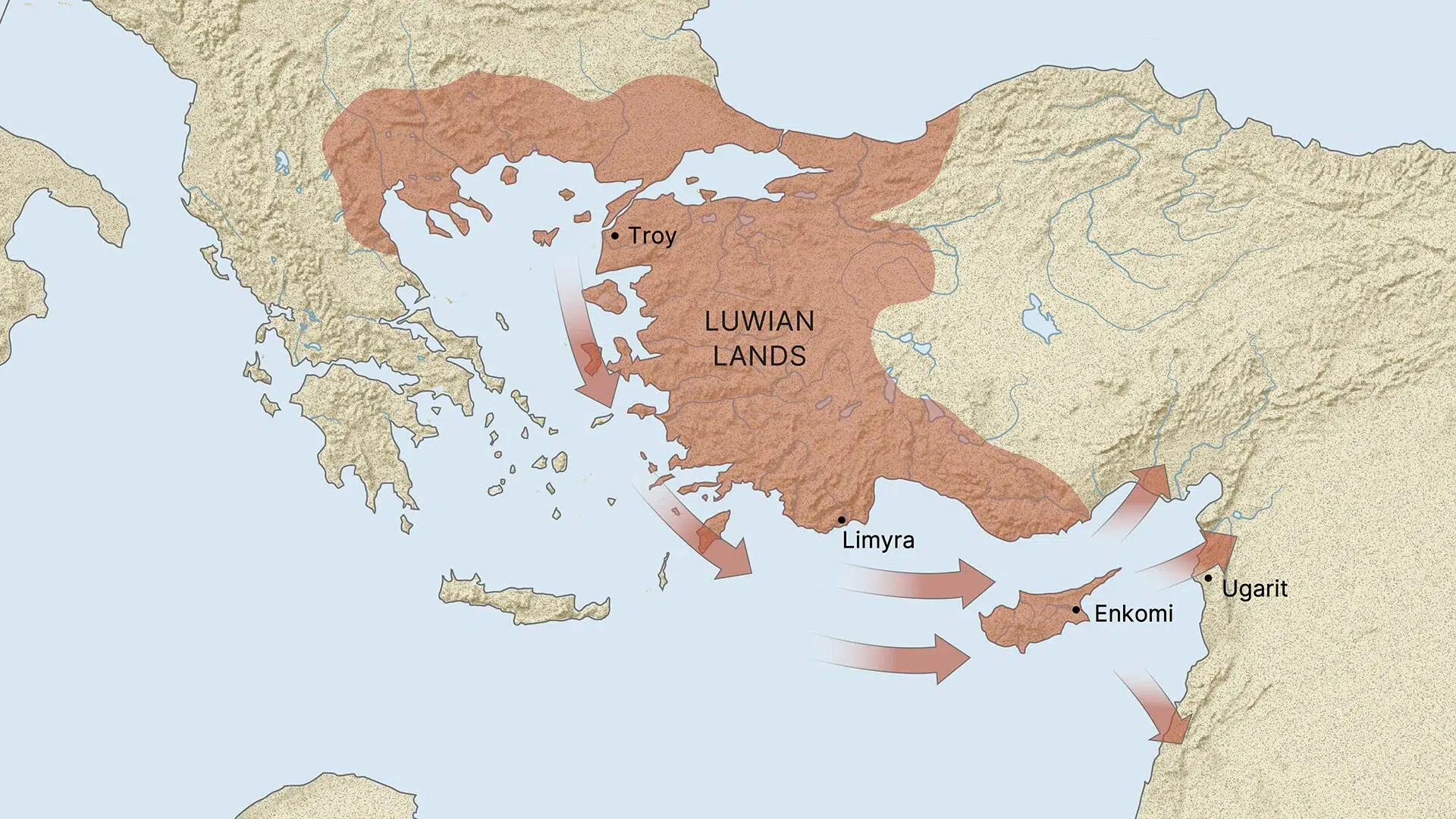1192 BCE – Sea Peoples’ Invasions: The Luwian Petty States Form a Temporary Alliance
Shortly after 1200 BCE the golden age ended abruptly. Egyptian temple inscriptions describe invasions of several tribes, who suddenly appeared in nimble ships on the coasts of the eastern Mediterranean to loot and pillage various port cities. The tribes’ names, which we summarize today under the abstract term “Sea Peoples,” can be traced back in part to the states in western Asia Minor, but also, it seems, to Libya, southern Greece, Crete, and Sardinia.
A remarkable testimony to these events can be found in the Archaeological Museum of Nicosia (Cyprus): a clay tablet about the size of a fist with Cypriot writing (Enkomi 1687). According to the Dutch linguist Fred Woudhuizen, it contains the letter of a Cypriot admiral who, while patrolling the Aegean Sea around 1192 BCE, unexpectedly encountered a large fleet. The ships had set out from Troy and were under the command of a Trojan prince named Akamas. Overwhelmed by the sheer superiority of the enemy, the admiral breaks off his patrol and heads for a safe harbor in Limyra on the southwestern Anatolian coast. From there, he dictates an urgent warning to his king in Cyprus and asks for reinforcements.
This dramatic scene is depicted on the cover of the page “Why the Luwians are important today” – if it proves to be correct, it shows the earliest documented sighting of the Sea Peoples’ invasions. It thus marks the beginning of an era of upheaval that led to the collapse of the Bronze Age kingdoms.

















